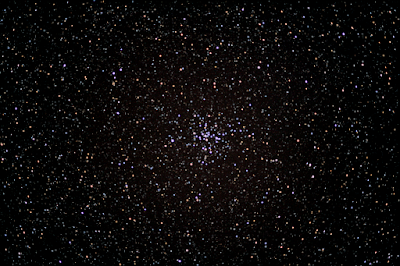
The M-81, M-82, Coddington complex is part of the Local Group of galaxies, which includes M-31 and our own Milky Way Galaxy. As Galaxies go, they’re practically next door at a mere 12 MLY.
I enjoy the widefield image, but two points stand out. Visual observation of M-81 and M-82 through the C-14 and a 12mm TeleVue eyepiece provides details that cannot be seen in the image. (See the technical specifications below: at 4.28 arc secs per pixel you lose fine detail.) And I’ve viewed some prime focus amateur photographs of these galaxies that absolutely knocked my socks off – most recently at: http://infiniti-eng.com/astrophotos/displayimage.php?pos=-53
As previously noted, "prime focus" imaging is on my list of things to do! But I’ve a lot more dues to pay.
Cheers.
Max
Addenda
On the M81-82 group see: http://www.seds.org/messier/more/m081gr.html
On the Local Group see: http://www.seds.org/messier/g-group.html
On the Local Group see: http://www.seds.org/messier/g-group.html
M-81, also called Bode’s Nebula
Magnitude: 7.0
Size: 24.9 x 11.5
Size: 24.9 x 11.5
M-82, also called the Cigar Nebula, also called the Exploding Galaxy
Magnitude: 8.6
Size: 11.2 x 4.3
http://www.seds.org/messier/m/m082.html
Magnitude: 8.6
Size: 11.2 x 4.3
http://www.seds.org/messier/m/m082.html
Coddington’s Nebula (NGC 3077)
Data acquisition and processing details
Camera control with ImagesPlus 2.82 using the Xti and Borg f/4 astrograph
16 subs at 1 min/ISO1600, unguided on March 16
8 darks at 1 min/ISO 1600
No bias or flats
Converted, calibrated, aligned, stacked and stretched in ImagesPlus 2.82
Resized and cropped in PS CS2
Astronomy Tools reduce star size, enhance DSO contrast, reduce space noise, diffraction spikes on medium stars
16 subs at 1 min/ISO1600, unguided on March 16
8 darks at 1 min/ISO 1600
No bias or flats
Converted, calibrated, aligned, stacked and stretched in ImagesPlus 2.82
Resized and cropped in PS CS2
Astronomy Tools reduce star size, enhance DSO contrast, reduce space noise, diffraction spikes on medium stars
Adjust levels, curves, hue and saturation in PS CS2
Converted for the web in PS CS2
Equipment for widefield DSLR
Borg 77mmED f/4 (using super reducer)
Canon Xti (unmodified)
Borg 77mmED f/4 (using super reducer)
Canon Xti (unmodified)
Hap Griffin astrocable
CG5-Go To GEM
Telrad
Dual saddle by Ken’s Rings
Celestron 102 guide scope
Meade DSI camera for guiding
CG5-Go To GEM
Telrad
Dual saddle by Ken’s Rings
Celestron 102 guide scope
Meade DSI camera for guiding
Technical specifications for widefield DSLR
Borg/Xti Field of View: 167'x251' Field of View (2.78E x 4.18E)
2394x3520 pixel array
4.28 arc seconds/pixel
Incidental notes
Dell Inspiron camera control
Dell Dimension Intel duocore processing
Dell Inspiron camera control
Dell Dimension Intel duocore processing




